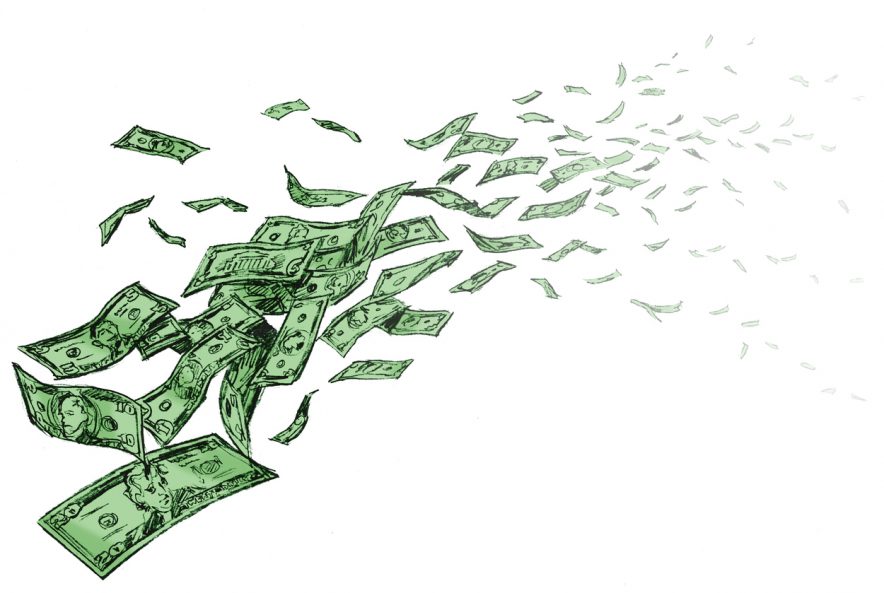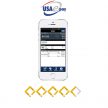
Cash In Or Cash Out?
The payments landscape is undergoing constant change. Ecommerce had already transformed the face of retail, and now more of us are using smartphones, mobile commerce, wallets and contactless payments.
The fintech and payments industry is also constantly coming up with new innovations, smarter ways to pay. These changes were inevitability going to lead to a lower dependency on cash, and to some retailers no longer having to accept cash payments, but how far will ‘cashless’ go in retail?
Changes in Retail & the Way We Shop
There have already been some significant changes in retail. In what was described as “the beginning of the end of cash”, UK-based retail store Waitrose opened its first cashless store in 2016, and it allows customers to pay with a credit card or smartphones instead.
The London based restaurant, Tossed, is also among those who have chosen to go cashless. And the UK businesses are far from alone in this trend. Retail stores around the world are adopting the model as the way we pay for things evolves and the need to pay in cash declines.
Although there are various opinions on the subject, some argue that retailers are keen to move toward a cashless future, and the statistics support the rapid decline in cashless payments.
In 2016, the Federal Reserve predicted that there would be more than $600 billion cashless transactions, and Perry Kramer of Boston Retail Partners, told the National Retail Federation (NFR) that up to 80% of retailers are already mainly cashless and argues that retailers prefer the convenience of electronic transactions over cash.
However, not everyone agrees with this viewpoint and Mallory Duncan of the NFR argues that cash is still king for retailers, no matter their size.
Nevertheless, cashless retail seems to be the way forward. According to research from the Payments Council, electronic check and card payments now lead cash payments, and it is thought they are likely to fall a further 30% in the next decade.
As technology advances and lifestyles become more demanding, the continued shift away from cash is certain to continue as consumers look for ways to make their lives easier, and that includes going cashless.
The Changing Faces of Technology & Lifestyles
Changes in technology and the ease of newer payment systems that fit in with busy lifestyles are driving the move away from cash.
As well as more consumers turning to credit cards and electronic payments, ecommerce, mcommerce and digital wallets also starting to take over, with mobile payments being one of the strongest areas of growth.
Digital wallets are expected to increase by 1/3 by 2021, as the use of smartphones grow, and more retailers have adopted mobile commerce, which has reduced the need to pay in cash.
However, there has also been many changes in the payment processing industry itself. It has adapted to the wants and needs of both retailers and consumers alike, by providing a more efficient shopping experience through innovative payment solutions and whatnot, which all helps to make paying by credit card easier, and further reduces the need to pay in cash.
Consumers’ lifestyles have also changed dramatically over the years. With less time to spare, and a 24/7 society, consumers want their shopping experience to be more efficient, and they want to shop at their own convenience; these factors have all contributed to a decline in cash payments. However, there are other reasons why we are less dependent on cash than we used to be.
Peer-to-peer lending is becoming more popular, reducing the need for banks to loan money, and in the future newer technologies will also lower banks’ dependency on cash. For instance, blockchain is just one form of payment that the numerous financial institutions are exploring.
In addition, the Bank of England has already announced a fintech accelerator program, which is likely to result in new payment systems and further change the way consumers pay for things.
However, as we move further way from cash and closer to newer technologies, there are pros and cons of a cashless retail system that should be considered.
Pros & Cons of Going Cashless
There are many benefits to a cashless retail system. These include:
- Greater security.
- Greater efficiency.
- Cost reductions.
- it’s less labour-intensive.
Some retailers find going cashless appealing as they feel it makes their business more secure as there is no cash on the premises. Consumers also feel more comfortable carrying less cash around with them.
Cashless payments are also more efficient. They are quicker to process than cash payments, which helps to keep the queues down in busy stores.
However, there are some downsides too. As more people move toward card, mobile, and ecommerce payments, there will be a greater need to address security concerns as these areas are likely to become a greater target by hackers. In addition, if retail was to go completely cashless, some consumers would naturally have concerns over electronic payments and how their privacy will be protected.
Challenges of a Cashless World
Many retail stores are going cashless, however, if this trend is to become wider spread and become completely global, this wouldn’t be without its challenges. India is a good example of this.
In India, mobile payments and wallets are already popular and Internet/smart phone users in India are expected to climb by 250 million users within the next five years, which would help pave the way to a cashless society. In addition, demonetization is government policy in India, which is viewed as a gateway to going cashless.
However, currently it is estimated that 98 percent of transactions in India are currently done through cash. If India is to become cashless it would have to overcome numerous challenges first.
One of the major issues is a lack of Internet and digital literacy. Back in 2012, it was estimated that only 6.5% of the population in India was Internet literate, but efforts are underway to substantially improve these figures in the next few years.
Limited Internet connections would also pose a barrier to a cashless future. Although there are currently 460 million Internet users in India, millions more are still unable to access it, and the country is known for its poor Internet infrastructure.
Some of India’s challenges to going cashless are unique, nevertheless, this example does just illustrate just how complex going completely cashless would be.
Further, as more countries and retailers consider a future without cash, the more effort they’ll need to be to keep consumers’ details safe; this would require a joint effort from the payments industry, retailers, fintech firms etc., if a secure, efficient cashless retail industry is to become a reality in the distant future.
Top Cashless Countries
Currently, Sweden is closer to a cashless society than anywhere else. Although it recently launched some new bank notes, there is less need for cash.
Approximately 2 percent of payments were made by cash in 2015, many of Sweden’s banks no longer have ATMs, and it is thought that within the next five years or so, Sweden will be close to going cashless.
The growing use of a new mobile app is one of the factors that has led to a considerable decline in the use of cash, and this shows how technology has led to the reduced need to carry money.
New technology is also making a significant impact in other Nordic countries. Mobile payments are dominating in Denmark, where card payments are often preferred over cash payments. Bloomberg reports that some stores now have the right to deny cash payments, and the banks are now exploring newer payment options, like blockchain.
Norway is another Nordic country where the use of cash is waning in popularity. In early 2016, its biggest bank, DNB, called for cash to be phased out, stating that it was often used on the black market and in money laundering schemes. The bank’s chief executive stated that only six percent of the Norwegian population regularly used cash and added that there were many other disadvantages in using cash payments. However, the suggestion wasn’t supported by the Ministry of Finance and there aren’t any plans to change the laws in Norway for the foreseeable future.
As well as Sweden and Denmark, Belgium, France, Canada, the United Kingdom and Germany are among some of the countries that are also listed in the world’s most cashless countries.
Retail Isn’t Ready to Cash Out
However, despite the distinct shift toward cashless retail, that doesn’t mean retail as a whole – or consumers – are ready to give up their cash just yet, and cashless retail isn’t a new concept.
Back in 2009, some were predicting it would be just a few years before cash ‘went out of fashion’ and consumers would be dependent on mobile payments instead. Then, the major challenges were the difficulties in making contactless payments, and security issues, but even with major advances in these areas, the much wider adoption of mobile payments, and the greater use of digital wallets, cash is still a main staple in retail.
And talks of a cashless retail go back much further than 2009. In 1995, an article was published about how a furniture store was no longer accepting cash payments because so few of its transactions were paid for that way.
The article talks about how changes in the banking and the payments system were beginning to change the way consumers paid for things and reducing cash payments, but it is not time for cashless retail just yet.
As an article on MarketWatch explains, although many consumers prefer to use their credit or debit cards as mobile payments grow in popularity, 80% of the global population still pay in cash.
Are Consumers Still Using Cash?
The short answer is, yes they are, although the growing popularity of other payment methods has led to a decline in its use.
Research from the Federal Reserve Bank research shows that while cash payments have decreased by five percentage points, and electronics payments are growing, consumers cash payments still dominate most of the major merchant categories.
Cash remains the payment method of choice for smaller purchases, for gifts and government purchases, food, personal care, auto, transportation and vehicle and entertainment shopping, as well as for medical and personal services. However, there is an obvious decline in percentages for some of categories as shoppers turn to other alternatives.
Consumers are also more likely to turn to cash for smaller purchases. 60 percent of shoppers still use cash when they spend $10 or less. 42 percent prefer cash for sales of less than $50, and most of those surveyed still carry some cash.
However, the research did spot a shift in the amount of people who were going for longer periods without carrying any cash on them. But overall, the Federal Research Bank concluded that cash is “still the most frequently used payment instrument”.
Conclusion
There has been an obvious change in the way that cash is used. However, although this has become more noticeable lately, it’s not a recent change, but rather a gradual one. Some retailers stopped accepting it years ago as they found that card payments had taken over, and as the payments landscape changed, consumers were always going to turn to newer ways of shopping and paying for things, reducing the need for cash.
Some are predicting that by 2036, the UK will be a cashless society, and as technologies advance, more retailers are likely to opt to go cashless. However, as long as cash dominates most merchant categories, most retailers are likely to stick with it for the more immediate future.
However, just how far cashless retail will go in the future will depend on numerous factors. For many retailers, it will be an individual thing and depend on the percentage of cash payments it takes. New technologies, the growing use of smartphones, and contactless payments, as well as further innovations in the payments industry will also take consumers further away from cash payments and retailers closer to a cashless future.
Ready to get started?
Get in touch or create an account





